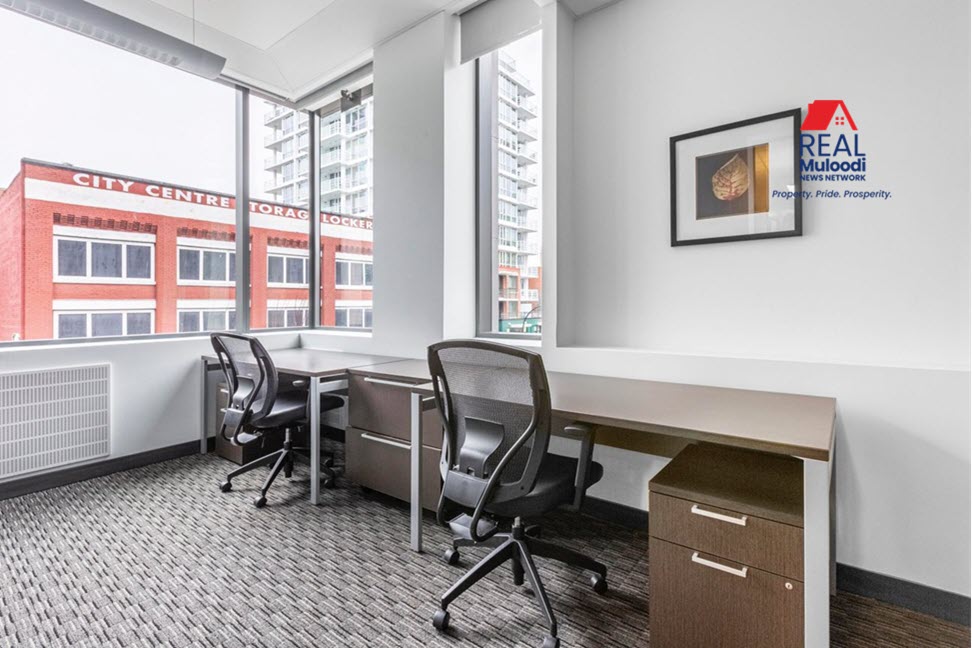UGANDA, Kampala | Real Muloodi News | Kampala City landlords are facing it rough with the rising performance of locally owned suburb shopping centres outside the Central Business District (CBD).
The consistent domestic consumption from the middle class has majorly supported these shopping centres.
The pressure arises from formal economic activities where the middle class needs state-of-the-art offices for a particular clientele.
The formal sector has grown and is now no longer concentrated in the Central Business District of Kampala and a few high-end residential areas but has penetrated to suburbs around Kampala. These areas are experiencing transformation and improved standards of living.
Office spaces to rent in Kampala and surrounding areas are categorised as Grade A, B and C spaces.
Grade A spaces, also known as ‘best in class’ office spaces, meet the requirement of modern-day office. Such buildings are usually the best furnished and attract a sense of touch.
Conversely, Grade B is secondary in location, maintenance and facilities. Grade B facilities provide what is functional, although they may not be striking at first glance.

Although usually not an option for many in the formal sector, Grade C office spaces are third-class office buildings. These types of offices have the poorest qualities of the three tiers of buildings and are found in the least desirable areas of the city. They are also the cheapest.
There are a lot of buildings still under construction and renovation, which, if completed by 2023, will add to the already existing space.
Therefore, space to let is in high demand. Everyone needs an office workspace.
Notably, the oil and gas sector, financial services and government parastatals have already shown interest in Grade A space.
Specifically, the oil and gas developments are envisaged to cause a rise in Kampala’s rental terms. The signing of the East African Crude Oil pipeline project is expected to raise occupier activity and increase demand from the oil and gas sector.
Stakeholders in the formal sector have realised that Grade B spaces are lower tier, which attracts lower-tier customers.
Construction and real estate players have a higher pitch in the formal sector by responding to people’s demands.
A travel agent once narrated her ordeal where she missed out on a ‘juicy’ job because her office space was lower tier. She testifies that she can now rent in a decent space where well-paying clients are not sceptical about paying their rent.
Players in the formal sector have also realised that lower-tier spaces are insufficient for several developmental operations. They prohibit growth, and there is a need for diversity.
Small spaces can only inhabit what they can handle – small things. Therefore, players search for those places that shall enable expansion.
Sovereignty in office spaces is exclusivity. Exclusivity restricts services to a particular group of people by setting minimum entry standards, and this is where high-paying clients go.
Grade A office structures have the exclusive touch of standing alone with the brand name so clear, unlike Grade B spaces where buildings are multi-tenanted. It is more like noise and clutter when you enter a multi-tenanted building, and one might lose sight of the particular brand they are looking for.
Non-Government Organisations (NGOs) have resorted to consolidating their operations in stand-alone buildings rather than renting several buildings. This has also been due to the downsizing resulting from COVID-19 and the new trend of working from home.
The fact that the people who fund these organisations have also pulled out from funding most activities of the NGOs due to government policy and financial constraints after the pandemic forced them to opt for cheaper options regarding their office spaces.
The pandemic inevitably caused the working-class people to purchase from within their residential areas. This called for the need to develop more super and hypermarkets on the city outskirts to suit the clientele’s needs.
However, despite the stiff competition between Central Business District and developments in the city outskirts, rent in the Central Business District is still expensive and unaffordable for most businesses.
Unlike other sectors, the most costly Grade A buildings have recorded the biggest average occupancy with 89%, 83% for Grade B, and 74% for Grace C buildings.
Indeed, Grade A is the most wanted space in the formal sector.
As time goes on, winning and renowned businesses might be nowhere in Grade B and C spaces.
READ MORE LIKE THIS:



